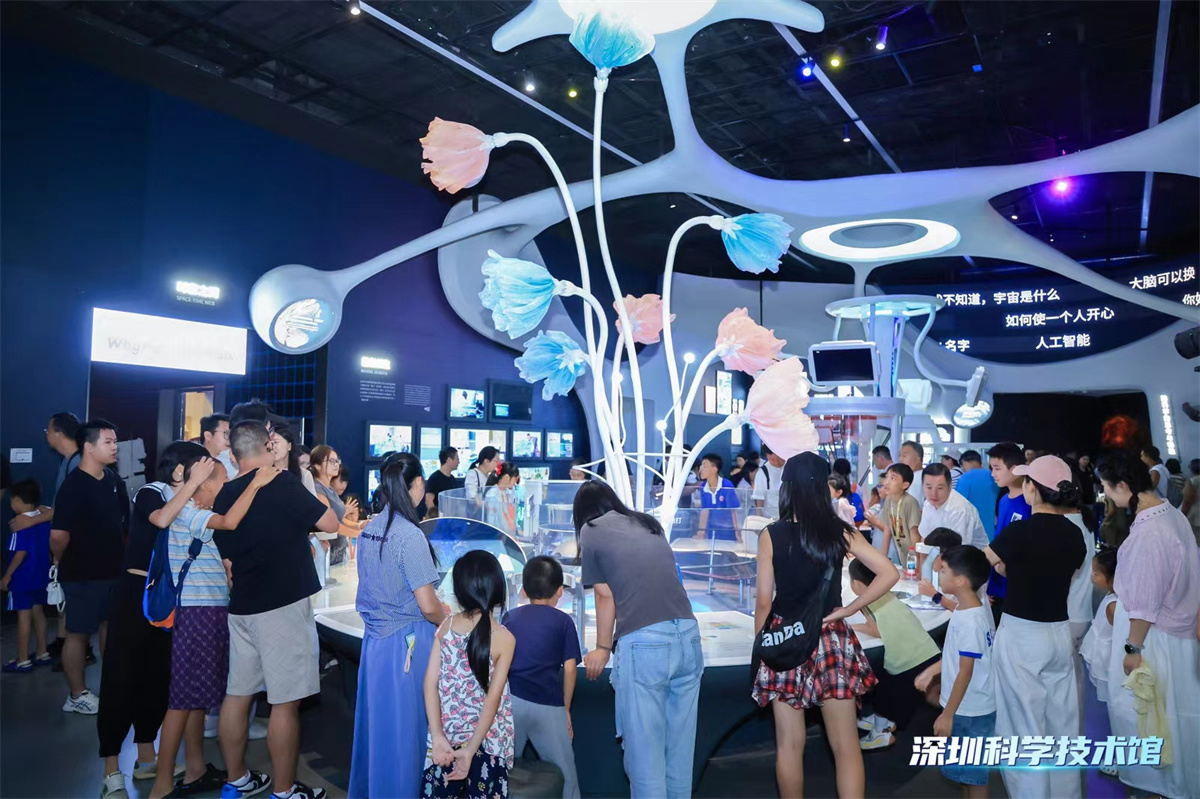
The Shenzhen Science & Technology Museum has attracted over 2 million visitors since its opening on May 1, the museum management said on Oct. 7.
In just over five months, the museum has become a “phenomenal” landmark in China's science popularization landscape, setting a new benchmark for the rapid rise of public science venues in China.
As the world's first museum dedicated to digital civilization, the venue features 24 themed exhibition zones and 950 innovative exhibits, ranking among the nation's best in both quantity and creativity. Notably, 80% of exhibits offer immersive, interactive experiences that blend science, technology, society, art, and culture — transforming traditional displays into engaging, multi-sensory journeys of discovery.
Many exhibits are closely aligned with Shenzhen's signature “20+8” industrial clusters, combining innovation with local relevance. Additional facilities, including a planetarium, observatory, special-effects cinema, and study-tour spaces, further enrich the city's science education ecosystem.
Since its opening, the museum has held over 4,400 science education events, establishing a vibrant educational framework that delivers “daily experiences, weekly updates, and monthly themes.” Activities cover a wide range of cutting-edge fields, from artificial intelligence and life sciences to aerospace and defense technology.
The museum has introduced creative public events such as China's first “science wedding ceremony” on the Qixi Festival and a “Starry Mid-Autumn” astronomy-themed program. Embracing interdisciplinary learning, the museum tailors its programs to diverse audiences through initiatives like live science shows and 1-square-meter mini-labs.
Visitor data show the museum's growing appeal extends well beyond the Pearl River Delta — attracting audiences from Hong Kong, Macao, Taiwan, and provinces including Jiangxi, Hunan, and Xinjiang, as well as tens of thousands of foreign visitors.
The museum is also a key player in advancing Shenzhen's “science, education, and talent integration” reform pilot. As a citywide hub for science education, it plays a vital role in cultivating future innovators.
Supporting the city's “Half-Day a Week Science Education” initiative, the museum has partnered with over 100 schools and district education bureaus to promote hands-on science learning. In September, it signed strategic cooperation agreements with Guangming and Futian education bureaus to train science teachers and develop customized curricula. More than 110,000 students in Guangming District will participate in off-campus science programs at the museum.




